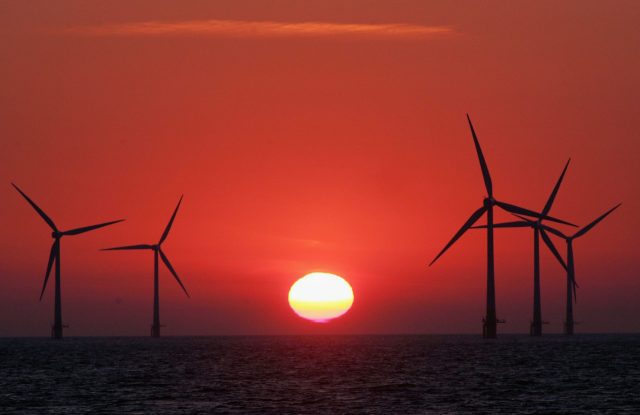Credit: Matt Cardy / Getty

Why bother with renewable power? Yes it’s clean. Yes it’s green. And it’s also much cheaper than it used to be.
But how relevant is it? According to the International Energy Agency IEA), hydroelectric, solar and wind power will together supply barely 4 per cent of global energy demand by 2040.
That makes renewable power look pretty unimportant.
But, watch out – energy statistics, like most statistics, must be interpreted with caution. Narratives composed of numbers may appear to be more objective than those composed of words, but that’s all the more reason for vested interests to exploit their ambiguous qualities (or should that be quantities?).
For a start, official energy prognosticators have a pretty consistent record of underestimating the rate of renewable energy expansion. As with most new technologies, forecasters tend to err on the side of caution. Fair enough.
Then there’s the distinction to be made between energy and electricity. You’d be amazed just how often politicians and journalists confuse the two. Energy includes not just electricity but also fuels used for heating and hot water, industrial processes and transport. The key renewable technologies – i.e. wind turbines and solar photovoltaic panels – generate electricity, and the debate about how much we should use them relates to the electricity sector only. Therefore, to try to prove their irrelevance by using statistics relating to overall energy demand is pulling a fast one. It’s like saying that the Team GB cycling team won a disappointing number of swimming medals.
But there’s an even the trickier issue in energy statistics: the distinction between primary and secondary energy. A crude definition (pun intended) is that primary energy is energy in its original form as extracted from nature e.g. coal, oil, natural gas, biomass etc. Secondary energy is what you get when primary energy is transformed to produce a carrier of energy – such as electricity. (There are various complications to these definitions, but to get on with it, I’m simplifying).
The crucial point is that a lot of energy is lost in the process of converting one form of energy into another. When fossil fuels are combusted, say in a power station or a vehicle’s engine, they produce heat as well as power and most of that heat is wasted (disappearing up the cooling tower or out the radiator, exhaust pipe etc). In fact, there’s generally more heat produced than power, meaning that we need two or more units of fossil fuel energy to produce each unit of electrical/mechanical energy.
The relevance to renewables and energy statistics is this: renewables aren’t hot. They don’t produce large quantities of waste heat. Instead of consuming a fossil (or nuclear) fuel, they produce electricity from the wind and the sun – inputs that aren’t counted as primary energy because they are ambient, inexhaustible and no one owns them. Thus renewables are only measured in terms of the electricity they produce.
In an eye-opening piece for Bloomberg, Liam Denning explains why this confuses the energy statistics. He does so by comparing two sets of energy projections – the IEA ones mentioned above and equivalent figures from BP. The key difference is that compared to the IEA projection, BP’s shows renewables taking a much higher share of primary energy:
“The estimates for thermal energy from fossil fuels and nuclear power are very similar…
“The really interesting difference concerns hydro, solar and wind power. BP’s higher figure isn’t because it is more bullish on these. Rather, in order to make the renewables figures comparable with the ones for fossil fuels and nuclear power, BP grosses them up as if they also produced waste energy. The IEA doesn’t do this, so its figure represents just the energy derived from a solar panel, wind turbine, or hydro plant. The IEA figure is 36 percent of the BP one, similar to the 38 percent conversion factor BP uses to adjust the data.
“There are pros and cons to both approaches. The IEA’s reflects the fundamentally different nature of renewable energy, but at the cost of making its share of the market look very low: Solar and wind are 11 percent of BP’s mix in 2040 but less than 4 percent of the IEA’s.”
In other words, showing renewable production as a share of all primary energy production (i.e. measured energy before conversion losses) flatters non-renewables because the fossil fuel and nuclear shares contain a massive amount of waste.
Or, as Denning points out, renewables don’t just displace non-renewable power, but also the non-renewable heat that gets vented in the process – and, of course, the fossil fuels used to produce both.
So be careful with energy statistics, they’re every bit as treacherous as the financial kind.










Join the discussion
Join like minded readers that support our journalism by becoming a paid subscriber
To join the discussion in the comments, become a paid subscriber.
Join like minded readers that support our journalism, read unlimited articles and enjoy other subscriber-only benefits.
Subscribe